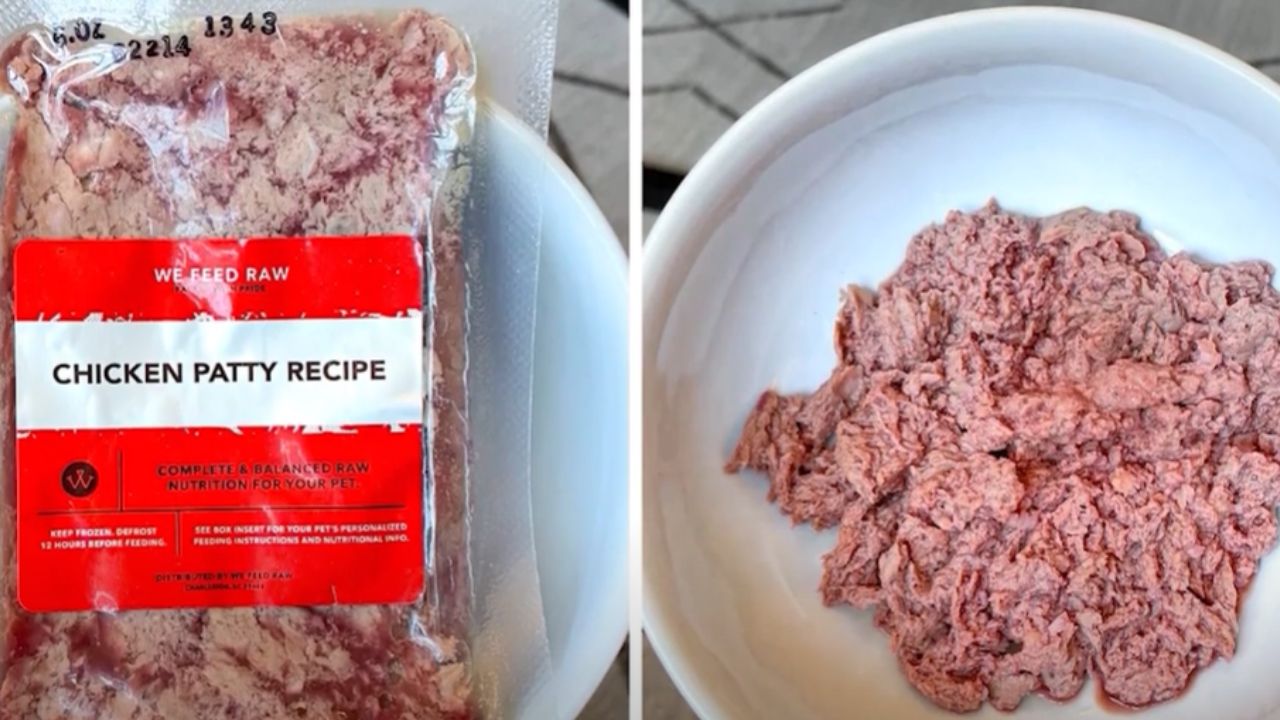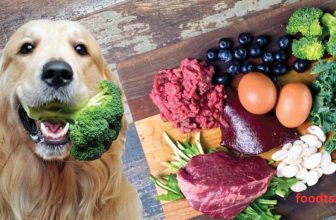What is the Top-Rated Dog Food? Best Choices Explained

What is the Top Rated Dog Food?
Choosing the top-rated dog food for your pet can feel overwhelming with so many options available. As a pet parent, you want to give your dog the best nutrition, but how do you know which food is truly the best for them?
The right food plays a crucial role in your dog’s health, energy, and overall well-being. In this guide, we’ll help you understand the key factors that determine the top-rated dog food, such as its nutritional value, quality ingredients, and expert opinions.
By the end of this article, you’ll have a better idea of how to select the best food for your dog. Let’s explore what makes certain dog foods top-rated and how to choose the right one for your furry friend!
Top-Rated Dog Food Brands
Choosing the best food for your dog can be challenging. There are many options available, and each brand promises to be the healthiest. Understanding what makes a dog food top-rated is crucial for your pet’s health. Brands that score well often have high-quality ingredients, balanced nutrition, and a good track record. Let’s explore some of the best-rated dog food brands available.
Popular Choices
Many dog food brands have gained popularity due to their quality and reputation. Below are some of the top-rated choices:
- Royal Canin: Known for breed-specific formulas.
- Blue Buffalo: Uses natural ingredients.
- Hill’s Science Diet: Recommended by veterinarians.
- Merrick: Offers grain-free options.
- Purina Pro Plan: Balanced nutrition with added vitamins.
These brands are trusted by many dog owners. They offer various options, including dry food, wet food, and special diet formulas. Quality ingredients, balanced nutrition, and positive reviews make them top choices.

Emerging Brands
New brands are also making a mark in the dog food market. These emerging brands focus on quality and innovation:
- Orijen: Uses fresh regional ingredients.
- Acana: Focuses on biologically appropriate diets.
- Nutro: Known for non-GMO ingredients.
- Wellness CORE: Offers high protein content.
- Canidae: Provides grain-free and limited ingredient diets.
These brands are gaining popularity due to their commitment to quality. They often use unique ingredients and offer specialized formulas. Choosing an emerging brand can be a great option for dogs with specific dietary needs.
Nutritional Needs
Finding the top-rated dog food is essential for your furry friend’s health. Dogs have unique nutritional needs. These depend on their age, breed, and activity levels. Choosing the right food ensures they get the necessary nutrients. This leads to a happier and healthier dog. Let’s explore the factors that influence the best dog food choices.
Age Considerations
Puppies, adult dogs, and senior dogs have different nutritional needs. Puppies need food high in protein and fat. This supports their rapid growth and energy levels. Look for puppy formulas. They usually contain DHA for brain development.
Adult dogs require a balanced diet. They need a mix of protein, fat, and carbohydrates. This maintains their energy and muscle mass. Adult formulas often include vitamins and minerals. These support their overall health.
Senior dogs have slower metabolisms. They need fewer calories but more fiber. This helps with digestion. Senior formulas often have added joint support ingredients. Examples include glucosamine and chondroitin.
Breed Specifics
Different breeds have different nutritional requirements. Small breeds often need more calories per pound. This is due to their higher metabolism. Look for small-breed formulas. These are designed to meet their energy needs.
Large breeds require food that supports joint health. They are prone to joint issues. Large breed formulas usually contain glucosamine and chondroitin. These ingredients support healthy joints.
Working dogs have high energy needs. They require food with higher protein and fat content. Look for performance formulas. These are designed to sustain their energy levels.
Table showing breed-specific needs:
| Breed Type | Nutritional Needs |
|---|---|
| Small Breeds | High calories per pound, higher metabolism |
| Large Breeds | Joint support ingredients, balanced nutrition |
| Working Dogs | Higher protein and fat content, energy-sustaining |
Ingredient Quality
Choosing the best dog food can be confusing. Many options claim to be the top-rated. The quality of ingredients is key when selecting dog food. This ensures your pet gets the best nutrition. Let’s explore some important aspects of ingredient quality.

Whole Foods
Whole foods are vital in dog food. They provide natural nutrients. These ingredients are unprocessed or minimally processed. Whole foods include:
- Meats: Chicken, beef, lamb
- Vegetables: Carrots, peas, sweet potatoes
- Fruits: Apples, blueberries, bananas
- Grains: Brown rice, oats, barley
These ingredients offer better nutrition. They are rich in vitamins, minerals, and antioxidants. Whole foods help your dog stay healthy and energetic. They also support a strong immune system. Always look for whole foods in the ingredient list. This ensures your dog gets high-quality nutrition.
Avoiding Fillers
Fillers are low-quality ingredients. They add bulk but offer little nutrition. Common fillers include corn, soy, and wheat. These can cause allergies and digestive issues in dogs. It is important to avoid fillers for a healthier diet. Here are some fillers to watch out for:
- Corn: Often used as a cheap carbohydrate source
- Soy: Can lead to allergies and thyroid problems
- Wheat: May cause digestive issues
Fillers do not provide essential nutrients. They are often used to cut costs. Instead, choose dog foods with whole foods. This ensures your pet gets the best nutrition. Avoiding fillers can lead to a longer, healthier life for your dog.
Customer Reviews
Choosing the best dog food is important. It impacts your pet’s health and happiness. Customer reviews help in finding the top-rated dog food. These reviews show real experiences with different brands and products.
User Experiences
Many dog owners share their experiences with different brands of dog food. Positive reviews often highlight improved health and energy in their pets. Negative reviews may mention issues like allergies or digestive problems.
Here are some common points from user reviews:
- Improved coat and skin condition in pets.
- Higher energy levels and activity.
- Reduced allergies and sensitivities.
- Better digestion and fewer stomach issues.
- Pets enjoy the taste of the food.
Some users prefer grain-free options. Others look for specific ingredients. Reviews often mention the importance of natural and high-quality ingredients.
Expert Opinions
Veterinarians and pet nutritionists provide valuable insights. Experts stress the importance of balanced nutrition. They recommend foods that meet the dietary needs of dogs.
According to experts, here are the key factors in top-rated dog food:
- High protein content from quality sources.
- Essential vitamins and minerals.
- No artificial additives or preservatives.
- Suitable for the dog’s age and health condition.
- Proper balance of carbs, fats, and proteins.
Experts often review ingredient lists. They look for natural sources of nutrients. Avoiding fillers and by-products is a common recommendation. Consideration of special dietary needs, such as allergies, is also important.
Price Comparison
Choosing the right dog food is important. It affects your pet’s health and happiness. Many brands offer different types of food. Prices vary, and it can be hard to decide. This post helps you find the best dog food. We’ll compare prices and quality. Let’s explore budget-friendly options and premium choices.
Budget-friendly Options
Finding good dog food on a budget is possible. Some brands offer quality without a high price. Here are some options to consider:
- Pedigree: Known for affordable prices. Offers balanced nutrition.
- Purina Dog Chow: Another budget-friendly brand. Provides necessary nutrients.
- Ol’ Roy: Walmart’s brand. Cheap but decent quality.
These brands offer different types of food. Dry kibble is usually cheaper. Wet food costs more but may be necessary for some dogs. Here’s a simple table comparing prices:
| Brand | Type | Price (per lb) |
|---|---|---|
| Pedigree | Dry | $1.20 |
| Pedigree | Wet | $2.50 |
| Purina Dog Chow | Dry | $1.30 |
| Purina Dog Chow | Wet | $2.70 |
| Ol’ Roy | Dry | $0.90 |
| Ol’ Roy | Wet | $1.80 |
These prices are average and may vary by location. Remember, cheaper food may lack some nutrients. Always check the ingredients. Look for proteins and vitamins. Avoid fillers like corn and soy.

Premium Choices
Premium dog food brands offer higher quality. They use better ingredients. These foods often have more nutrients. Here are some top premium brands:
- Blue Buffalo: Known for natural ingredients. No artificial flavors or preservatives.
- Wellness Core: Grain-free option. High in protein.
- Orijen: Uses fresh, regional ingredients. High meat content.
Premium brands offer dry and wet options too. Here’s a table comparing their prices:
| Brand | Type | Price (per lb) |
|---|---|---|
| Blue Buffalo | Dry | $3.50 |
| Blue Buffalo | Wet | $4.00 |
| Wellness Core | Dry | $3.70 |
| Wellness Core | Wet | $4.20 |
| Orijen | Dry | $4.00 |
| Orijen | Wet | $4.50 |
Premium dog food is more expensive. But it provides better nutrition. High-quality proteins and fats support your dog’s health. Look for foods with whole meats and vegetables. Avoid brands with artificial additives. Investing in premium food can lead to a healthier, happier pet.
Special Diets
Choosing the right dog food is important for your dog’s health. Special diets can help if your dog has specific needs. Some dogs need grain-free options, while others need allergy-friendly choices. Read on to learn about these diets and find the best food for your furry friend.
Grain-free Options
Some dogs have trouble digesting grains. Grain-free dog food can be easier for them to digest. These foods replace grains with other ingredients. Common substitutes include potatoes, peas, and sweet potatoes. These ingredients provide the necessary carbohydrates without causing digestive issues.
Benefits of grain-free dog food:
- Improves digestion
- Reduces allergies
- Promotes healthy skin
- Supports a shiny coat
Several top-rated grain-free dog foods include:
| Brand | Main Ingredients |
|---|---|
| Blue Buffalo Wilderness | Chicken, Peas, Potatoes |
| Wellness CORE | Turkey, Chicken, Lentils |
| Taste of the Wild | Bison, Sweet Potatoes, Peas |
Choosing the right grain-free dog food can help your dog feel better. Always check the ingredient list and talk to your vet.

Allergy-friendly Choices
Dogs can have allergies just like humans. Allergy-friendly dog food can help manage these issues. These foods often use limited ingredients. This reduces the risk of allergic reactions.
Signs your dog may need allergy-friendly food:
- Itchy skin
- Frequent ear infections
- Digestive problems
- Red, irritated eyes
Popular allergy-friendly dog foods include:
| Brand | Main Ingredients |
|---|---|
| Natural Balance L.I.D. | Duck, Sweet Potatoes |
| Canidae PURE | Salmon, Peas |
| Hill’s Science Diet Sensitive Stomach & Skin | Chicken, Brown Rice |
Allergy-friendly dog food can make a big difference. Look for foods with fewer ingredients. Always talk to your vet before making changes to your dog’s diet.
Choosing the top-rated dog food is crucial for your pet’s health. Proper feeding guidelines help maintain their energy and well-being. It’s important to know how much and when to feed your dog. This ensures they get all the nutrients they need.
Portion Control
Controlling portions is vital for a dog’s health. Overfeeding can lead to obesity and other health problems. Here are some tips for portion control:
- Read the dog food label: It gives recommended portion sizes based on your dog’s weight.
- Use a measuring cup: This helps ensure you’re giving the right amount.
- Adjust for activity level: More active dogs may need more food, while less active dogs need less.
- Monitor your dog’s weight: Regularly check their weight to ensure they stay at a healthy level.
It’s also helpful to consult your veterinarian. They can provide specific advice based on your dog’s breed and age. Some dogs may require special diets or portion sizes.
Feeding Schedules
Feeding schedules help maintain a dog’s routine. Dogs thrive on consistency. Here are some guidelines for setting up a feeding schedule:
- Feed at the same time: Choose set times in the morning and evening.
- Avoid free feeding: Leaving food out all day can lead to overeating.
- Provide fresh water: Always have fresh water available for your dog.
- Adjust for age: Puppies may need more frequent meals, while adults can be fed twice a day.
Sticking to a schedule helps with digestion and energy levels. It can also make house training easier for puppies. Consistent feeding times create a sense of security and routine for your dog.
Transitioning Foods
Choosing the top-rated dog food is crucial for your pet’s health. A high-quality diet ensures your dog gets all the necessary nutrients. But, changing dog food can be tricky. Transitioning foods slowly is key to avoiding upsetting your dog’s stomach. Let’s discuss how to make this change smoothly and recognize signs of adjustment.
Gradual Changes
Switching your dog’s food should be done gradually. Sudden changes can cause digestive issues. Here’s a simple plan for transitioning:
- Days 1-3: Mix 25% new food with 75% old food.
- Days 4-6: Mix 50% new food with 50% old food.
- Days 7-9: Mix 75% new food with 25% old food.
- Day 10: Serve 100% new food.
This step-by-step method helps your dog’s digestive system adjust. Patience is essential during this process. Rushing can lead to vomiting or diarrhea. Always keep fresh water available. Monitor your dog for any changes in behavior or health.

Signs Of Adjustment
As you transition your dog’s food, watch for signs of adjustment. Some dogs adapt quickly, while others take time. Look for these indicators:
- Normal stools: Firm and regular bowel movements.
- Increased energy: More playful and active behavior.
- Healthy coat: Shiny and smooth fur.
Sometimes, you may notice temporary signs of discomfort, such as mild gas or loose stools. These usually resolve within a few days. If symptoms persist, consult your vet. They can provide guidance and ensure your dog stays healthy.
Frequently Asked Questions: What is the Top-Rated Dog Food?
What Is The #1 Best Dog Food?
The best dog food depends on your dog’s breed, age, and health. Consult your vet for a personalized recommendation. Popular options include Royal Canin, Blue Buffalo, and Hill’s Science Diet.
What Is The Highest-Rated Fresh Dog Food?
The highest-rated fresh dog food is often Nom Nom. It is praised for quality ingredients and balanced nutrition. Pet owners love it.
What Is Premium Dog Food?
Premium dog food contains high-quality ingredients, often real meat, vegetables, and essential nutrients. It avoids fillers and artificial additives, promoting better health and digestion for dogs.
What Is The Healthiest Food To Feed Your Dog?
The healthiest food for your dog includes high-quality, balanced commercial dog food. Incorporate lean meats, vegetables, and whole grains. Avoid feeding them human foods high in fat, salt, or sugar. Always consult your vet for personalized recommendations.
What Are The Key Ingredients In Top-rated Dog Food?
Top-rated dog food usually has real meat, vegetables, and grains. Avoid artificial flavors and preservatives.
Conclusion
Choosing the top-rated dog food can be challenging. Each dog is unique. Their needs vary based on age, size, and health. Research different brands. Consult your vet for personalized advice. Read reviews from other dog owners. Prioritize high-quality ingredients and nutrition.
Your furry friend deserves the best. Their health and happiness depend on your choice. Stay informed and make the best decision. Your dog will thank you.







